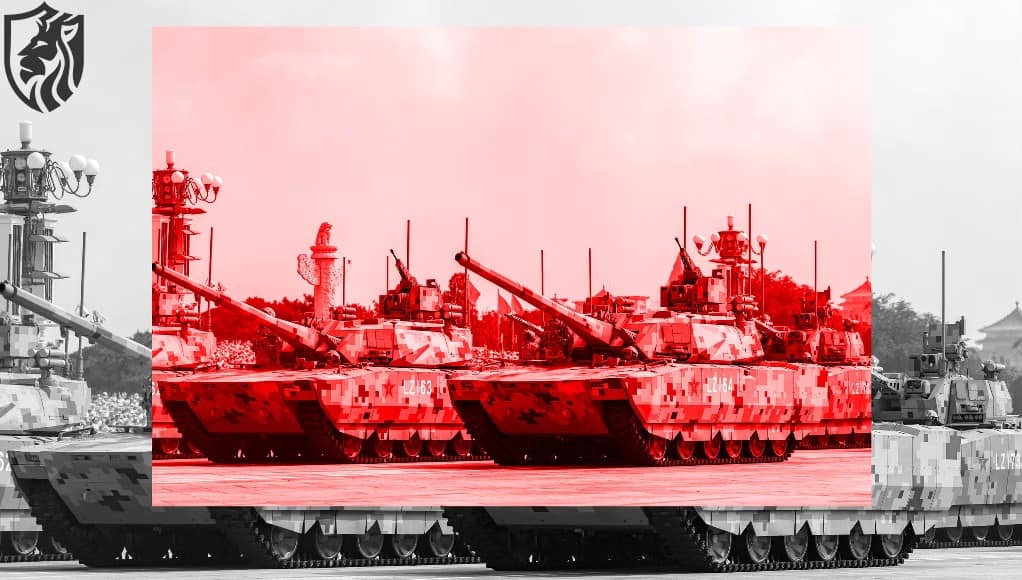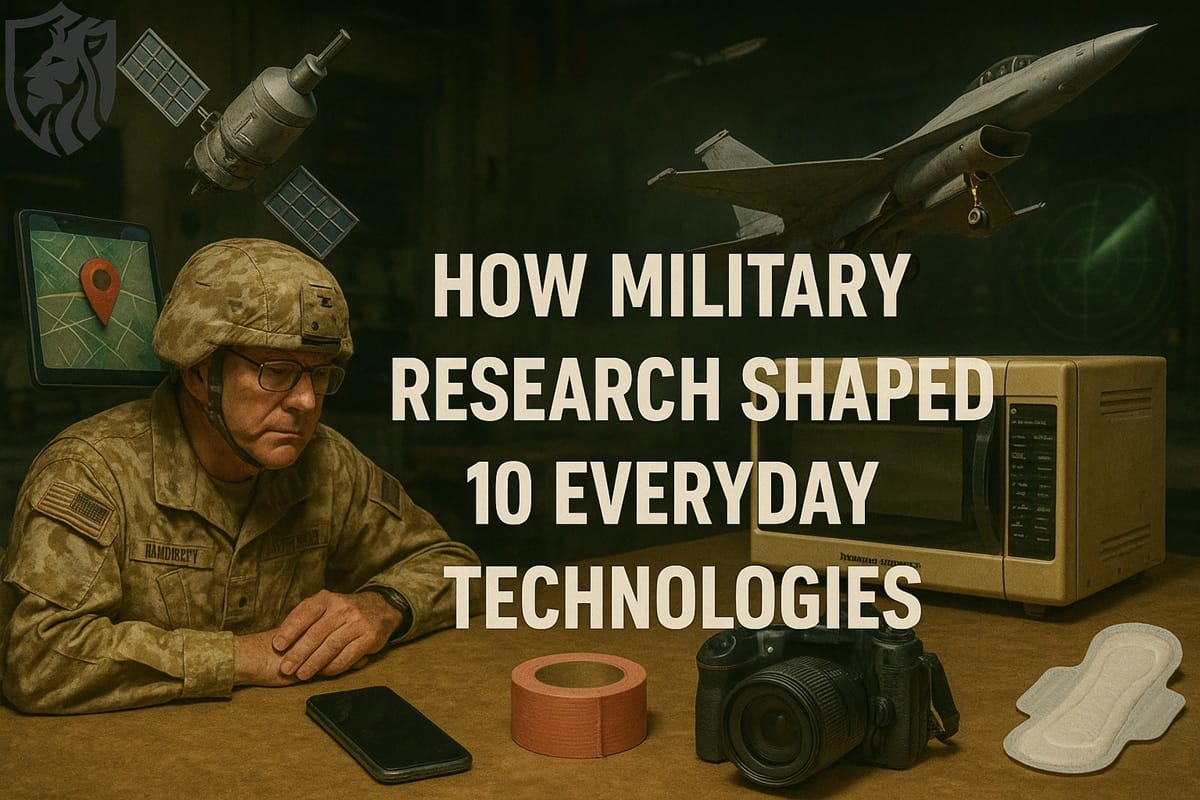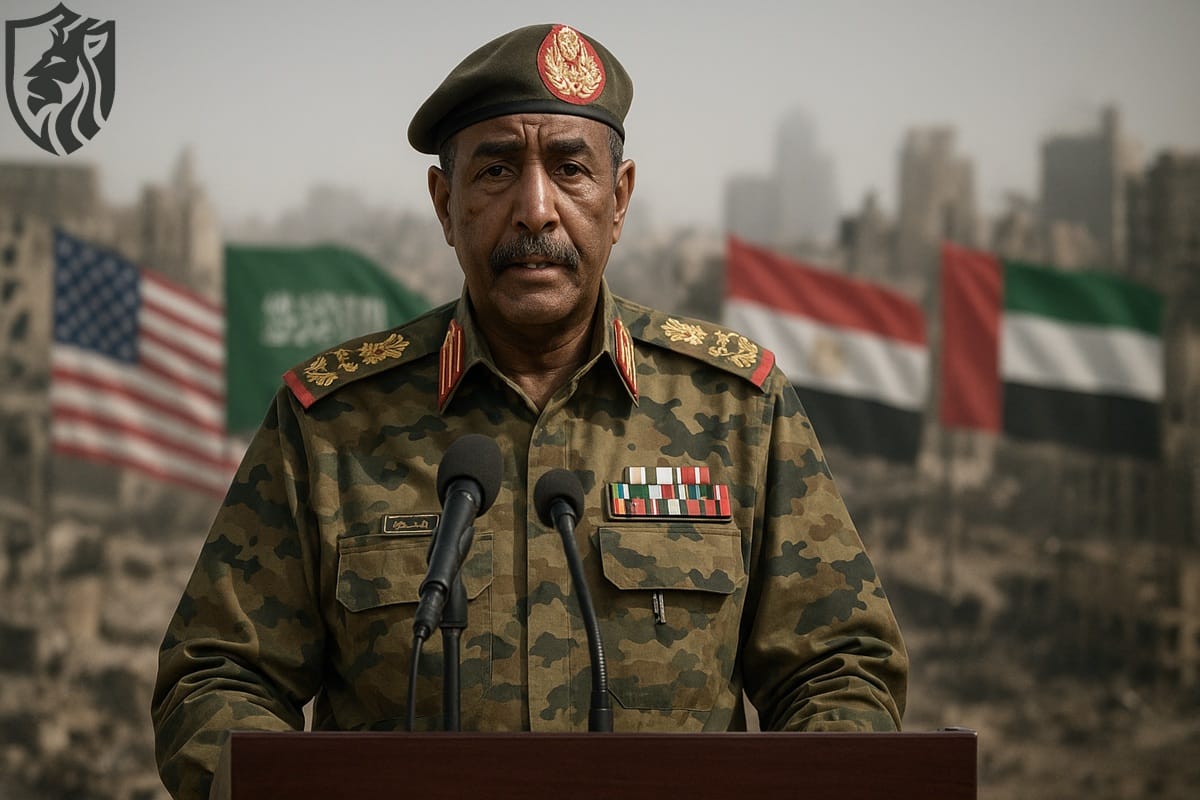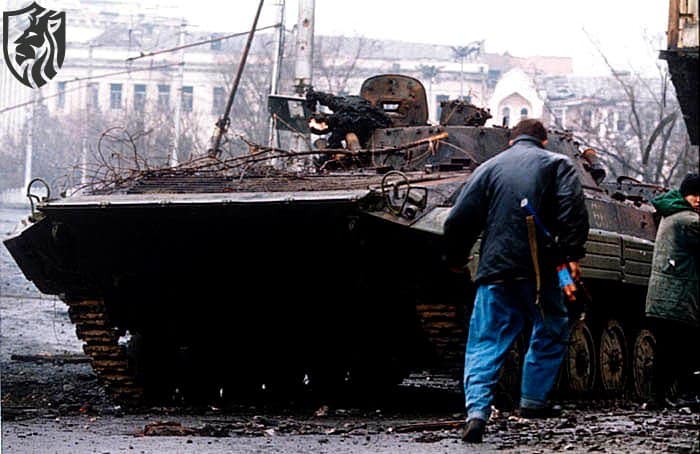
The Chechen War (1994–1996) provided several sobering lessons in modern warfare. Among these was the devastating ambush and destruction of a Russian convoy of T-80 tanks in Grozny. This incident highlighted the dangers of urban combat and the vulnerabilities of advanced armoured vehicles when deployed without adequate support.
The Incident: A Convoy in Peril
In late December 1994, during the Battle of Grozny, Russian forces deployed a convoy of T-80BV tanks into the Chechen capital. The goal was to assert control over the city, but the operation was fraught with poor planning and missteps. The convoy entered Grozny without sufficient infantry support, a critical error in urban combat scenarios.
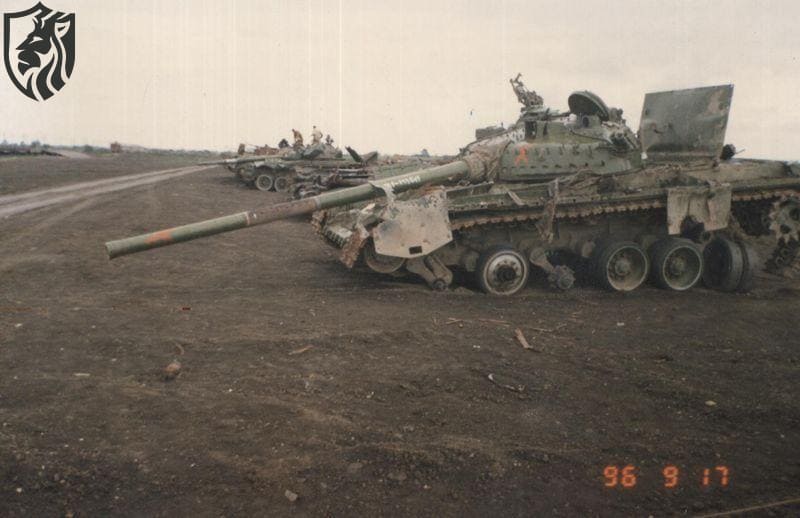
Chechen fighters, skilled in guerrilla warfare, launched a well-coordinated ambush. The narrow streets and tall buildings of Grozny allowed them to conceal their positions and attack from above, exploiting the tanks’ vulnerabilities.
Chechen Tactics: Guerrilla Warfare at Its Best
Three-Tier Attack Strategy
Chechen forces employed a three-tier strategy to disable and destroy the T-80 tanks:
- Immobilisation: The first wave of attackers used RPGs to target the tanks’ tracks, rendering them immobile.
- Weak Points: The second wave targeted vulnerable areas, such as the rear engine compartments and thin top armour.
- Elimination: The final tier targeted crew members as they attempted to escape.
This strategy was devastatingly effective, leading to the destruction of dozens of tanks and significant Russian casualties.
Why the T-80 Struggled in Urban Combat
The T-80BV, while advanced for its time, was not designed for urban warfare. The confined streets of Grozny rendered its primary strengths—speed and firepower—ineffective. Key vulnerabilities included:
- Top Armour: Thinly protected, it was easily targeted by attacks from above.
- Rear Compartment: The engine and exhaust ports were susceptible to RPG strikes.
- Poor Coordination: Without infantry to secure the surroundings, the tanks became sitting targets.
Material Losses
- T-80 Tanks Destroyed
- Estimate: Between 60 and 200 tanks were destroyed during the broader Grozny campaign. The exact number of T-80s is debated but believed to be a significant portion of these losses.
- Other Armoured Vehicles
- BMP Infantry Fighting Vehicles: Over 100 BMPs were destroyed.
- BTR Armoured Personnel Carriers: Approximately 50 were lost.
- Helicopters and Aircraft
- Chechen anti-aircraft fire destroyed at least five helicopters.
- Logistics and Supplies
- The ambush of convoys carrying fuel, ammunition, and food presented severe logistical challenges.

Manpower Losses
- Russian Military Personnel Killed
- Estimate: The initial stages of the Battle of Grozny claimed the lives of around 2,000 soldiers, many of whom were tank crews.
- Wounded Soldiers
- An estimated 6,000 soldiers suffered injuries, including severe burns and shrapnel wounds.
- Captured Soldiers
- Chechen fighters reportedly captured hundreds of Russian troops, using them for propaganda purposes or as leverage in negotiations.
Chechen Fighter Losses
- Fighters Killed
- Estimates indicate that the Battle of Grozny claimed the lives of between 500 and 1,000 Chechen fighters.
- Civilians and Non-Combatants
- The urban nature of the conflict led to a high civilian casualty rate, with thousands of residents caught in the crossfire.
Tactical and Strategic Implications
The high losses in men and materials showcased the consequences of poor planning and overconfidence. The Grozny ambush became a case study in military strategy, underscoring the dangers of deploying armoured vehicles without adequate support and preparation in urban warfare.
Lessons Learned from the Ambush
1. Importance of Combined Arms Tactics
The lack of infantry support was the most critical mistake. In urban combat, infantry is essential to scout for threats and neutralise anti-tank positions.
2. Underestimating the Enemy
The Russian forces underestimated the Chechen fighters, who had intimate knowledge of the terrain and excelled at unconventional warfare.
3. Need for Adaptability
The T-80’s design, suited for open battlefields, made it less effective in urban settings. Modern militaries must ensure their equipment can adapt to diverse combat environments.
Impact on Modern Warfare
The destruction of the T-80 convoy during the Chechen War served as a crucial reminder for militaries worldwide. It brought attention to:
- Urban Warfare Training: Armoured units must train for operations in cities, focusing on coordination with infantry and drones.
- Technological Advancements: Modern tanks now incorporate active protection systems (APS) to counter threats like RPGs.
- Intelligence Gathering: Accurate intelligence is vital to avoid ambushes and assess enemy capabilities.
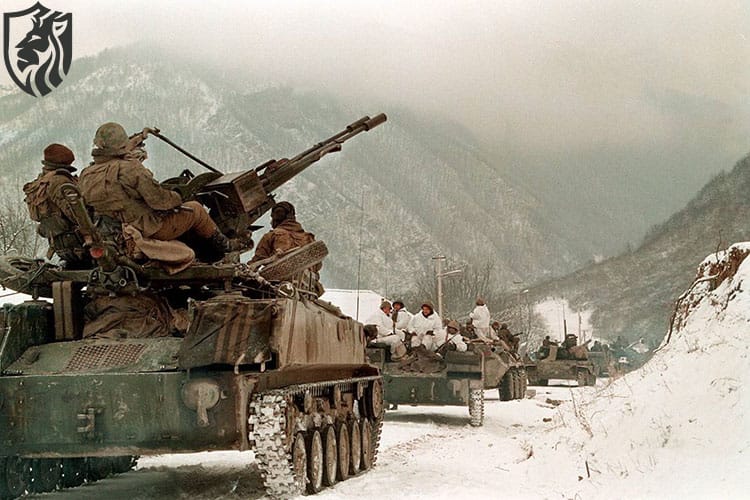
The Role of the T-80 in Russian Military Doctrine
The T-80 was once a cornerstone of the Soviet and later Russian armoured forces. However, its performance in Grozny raised questions about its survivability in asymmetric warfare. To address these vulnerabilities today, many T-80’s have undergone upgrades with enhanced armour and APSs.
Russian Learnt the Hard Way.
The Russian BMPT “Terminator” tank support vehicle emerged after Russia suffered catastrophic losses in urban combat during the First Chechen War, particularly in Grozny. Chechen fighters, armed with RPGs and anti-tank missiles, ambushed and destroyed Russian armoured columns, including T-80 tanks, in Grozny’s narrow streets.
The lack of adequate infantry support and the tank’s vulnerability in confined urban spaces drove home the need for a special vehicle. The Terminator was designed to address these shortcomings. Armed with dual 30 mm cannons, guided missile systems, grenade launchers, and machine guns, it provides a multilayered defense against infantry, light armour, and aerial threats.
Its robust armour and advanced targeting systems allow it to engage multiple threats simultaneously, even in complex urban environments. The designers specifically created the Terminator to protect armoured columns by suppressing enemies and stopping ambushes.
Deployed in limited numbers, the BMPT has showcased its capability in recent conflicts, solidifying its role as a vital component of modern urban warfare strategies. Russia integrates the Terminator to prevent another Grozny-like disaster, where guerrilla tactics destroyed unprotected tanks.
Conclusion: A Tactical Misstep with Lasting Implications
The ambush and destruction of T-80 tanks in Grozny remain a cautionary tale for military planners. It demonstrated how even advanced equipment can falter without proper strategy and support. As modern conflicts continue to evolve, the lessons from Grozny serve as a reminder of the importance of preparation, adaptability, and the integration of combined arms in warfare.
References
- Galeotti, M. (2014). Armies of Russia’s War in Chechnya. Osprey Publishing.
- RFE/RL. (1995). “Chechen Fighters Destroy Russian Tanks in Grozny.” RFE/RL Archives.
- The Military Balance. (1996). “Russian Military Failures in Chechnya.” International Institute for Strategic Studies.



